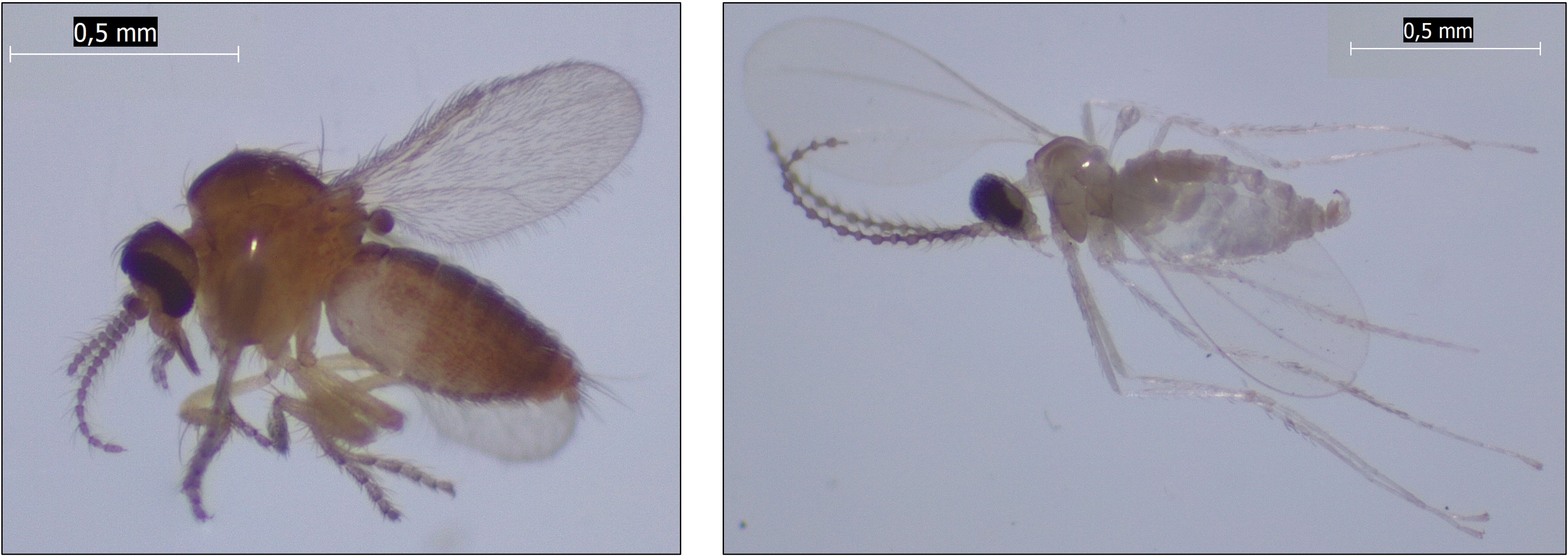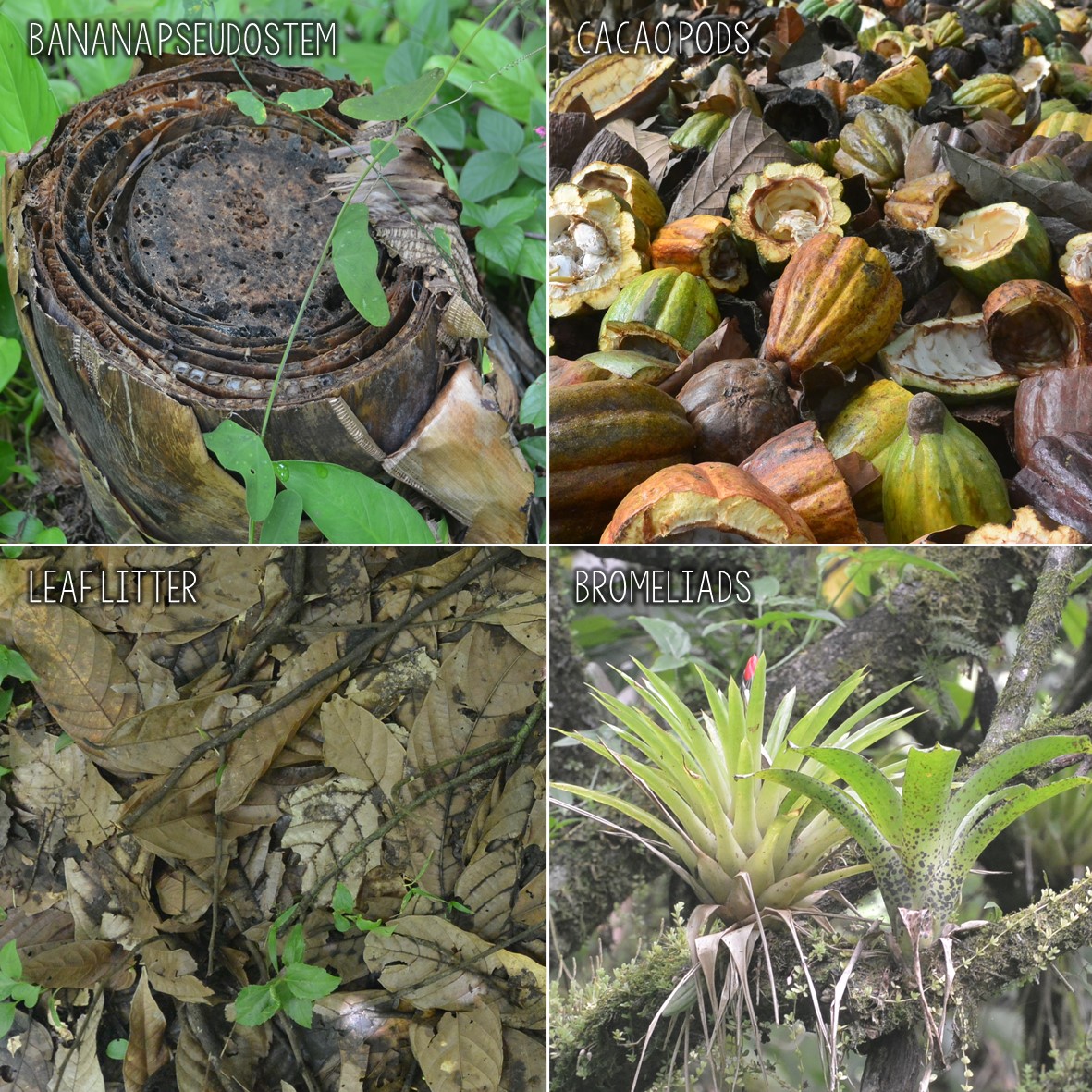What is pollination and how does this work in cacao?
The cacao tree cannot produce cacao beans unless its flowers are pollinated, making pollination an essential part in the production of chocolate. In biological terms, the pollination of a plant’s flowers is the transfer of pollen (male reproductive cells, the plant equivalent of sperm cells) to the plant’s ovules (female reproductive cells, the plant equivalent of egg cells) to allow their fertilisation. But since cacao trees are fixed to the ground, they need help to transfer pollen to ovules to fertilise their flowers.
It is important to know how the pollination of cacao works because in general, the rate of pollination is only 10% of the thousands of flowers a cacao tree can produce each year. That means that 90% of the flowers are not pollinated! A group of German researchers showed that cacao yield can be doubled when pollination is increased by manually pollinating flowers (Groeneveld et al., 2010). This indicates that there can be a big pollination gap: sometimes the number of flowers that are pollinated is lower than the maximum number of fruits a cacao tree can produce. If we know how cacao flowers are pollinated, we can find solutions to increase the pollination rate in a natural way, without needing to manually pollinate flowers.

Cacao flowers are very small, typically about 1 cm across, and their reproductive parts are even smaller. The male parts of the flower, where the pollen are located, are covered by hoods and the female part of the flower, where the ovules are located, is in a cage formed by five rods called staminodes. This intricate structure complicates pollination. For example, because of the hoods covering the male parts, the sticky pollen cannot be dislocated by wind. This means that cacao trees need help from insects to pollinate their flowers. But because of the small space inside the hoods and the staminode cage, only insects smaller than 2-3 mm can enter cacao flowers.
To be pollinators, these small insects have to first enter the hoods of the flower, where the sticky pollen can get stuck to their body, and they then have to enter the staminode cage to deposit this pollen for the ovules to be fertilised. Many cacao trees are auto-incompatible. This means that their flowers cannot be pollinated with their own pollen; they need pollen from a different tree. Because of this, the pollinators need to be able to move efficiently between trees to fertilise flowers.
Which are the main pollinators of cacao?
The short answer is: tiny flies (Diptera) from the families of the biting midges (Ceratopogonidae, including the genus Forcipomyia) and to a lesser extent the gall midges (Cecidomyiidae). However, most likely only a small number of the species in these highly diverse families are interested in cacao flowers and an even smaller selection will pollinate. The exact species involved remain unknown for most parts of the world.

Although bees can commonly be observed in cacao flowers, they are considered pollen thieves that are not involved in cacao pollination. Some dipteran flies other than biting midges and gall midges, including non-biting midges (Chironomidae), sewer gnats (Psychodidae), fungus gnats (Sciaridae) amongst others, are also known to visit cacao flowers, but thus far there is no evidence that these taxa are cacao pollinators. Besides flies, some parasitoid wasps and ants might be pollinators in some situations, but more evidence is needed.
It is important to keep in mind that the scientific literature cannot always be fully trusted given that many authors report flower visitors, many of which will not interact with the reproductive parts of the flowers.
Where do cacao pollinators reproduce?
The cacao pollinating midges are known to lay their eggs in moist habitats such as rotting leaf litter, rotting banana psuedostems, rotting cacao pods and most likely also inside the water contained in bromeliad plants. Some habitats that could possibly also be important are moist soil and small water bodies, but more evidence is needed.

How can we promote cacao pollination?
Some studies suggest it may be useful to add breeding habitats (e.g. slices of banana stems) or promote bromeliads in cacao plantations. Since these habitats are used as places where the eggs and the larvae of the pollinators develop, having more of these habits can lead to a higher number of adult pollinators in plantations. This can in turn lead to a higher number of pollinated cacao flowers and a potentially higher yield.

